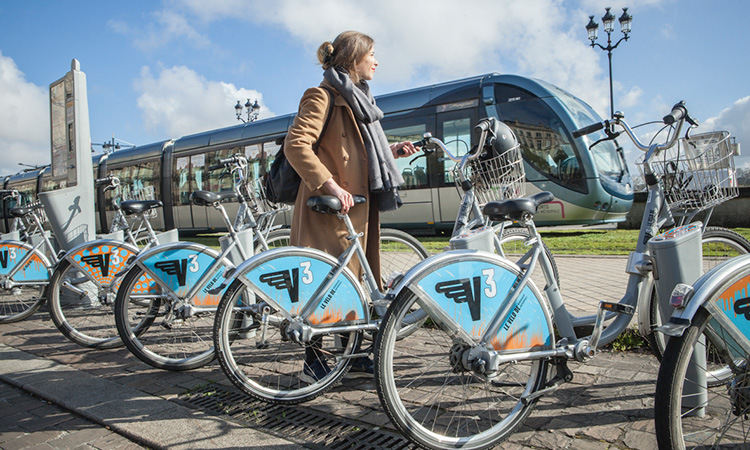The tram: A vital link in any integrated transport network
Posted: 19 September 2024 | Alistair Gordon - Keolis UK | No comments yet
Alistair Gordon, CEO of Keolis UK, stresses the vital role of integrating tram systems within broader transport networks to accommodate urban growth and improve connectivity in densely populated cities.


Credit: Keolis UK
Tram systems have seen something of a revival since the turn of the century. Why? Simply because they’re essential components of multimodal transport networks for a start, seamlessly connecting with a city’s metro, bus and train systems. This integration enhances travel options and bolsters connectivity between neighbourhoods delivering social and economic value.
Trams are essential components of multimodal transport networks, seamlessly connecting with a city’s metro, bus and train systems”
That connectivity is key, considering more and more people are flocking to cities. In 2023 they were home to 57% of an average country’s population, a trend showing no sign of slowing down. By 2050, its forecasted that 70% of the world’s population will live in cities.
This upwards trajectory means that improving a city’s connectivity is paramount to accommodate increasing urban populations – planning ahead is critical for future social prosperity.
But where to begin? An integrated transport network with a tram at its core is a good place to start. So, what have we learnt about using tram networks to bring a city together?


Credit: Keolis
The perks of a tram
The tram’s appeal lies in its comfort, capacity and user-friendly nature, serving as a handy option for those looking to transition effortlessly to soft modes of getting around like bikes or scooters. This versatility consistently appeals and draws in new customers.
Trams are ideal for connecting outlying municipalities located 15-20km from the city centre through fast lines in less dense areas”
To fully capitalise on the system’s popularity, operators need to introduce trams that compliment local bus networks. This is crucial because certain bus routes are able to mirror tram standards in terms of frequency and quality, meaning alignment between the two is vital.
To add to this, other bus routes function as more hyper-local feeder services from the main arteries of a tram. Synchronised timing for passenger transfers between the two then becomes pivotal. This co-ordination means that riders can easily switch between modes, expanding where a passenger can travel to and promoting neighbourhood cohesion.
For instance, trams are ideal for connecting outlying municipalities located 15-20km from the city centre through fast lines in less dense areas, as seen in Manchester and Dublin. From these tram stops, hyper-local buses can be teed up to take passengers even further to their desired destination.
Our operations of the tram network in Dijon, for example, is fully interconnected with local bus networks and feeder systems, making most neighbourhoods accessible. We’ve also implemented contactless payment terminals on all of Dijon’s trams to streamline the passenger experience, minimising delays and allowing riders to enjoy a hassle-free journey before hopping onto another mode of transport.
With the introduction of a Mobility-as-a-Service (MaaS) app, working with the transport authority has enhanced the passenger experience even further by integrating all public transport options in Greater Dijon, including the tram, into a single platform. This app facilitates bookings, route searches and real-time timetable updates. Additionally, the Bouquet Libertés, launched in September 2021, allows users to combine their transport tickets – including buses, trams and car parking – and incentivises multimodal travel.
These initiatives aim to make integrated networks attractive and alleviate congestion in city centres, something that should be at the forefront of an operator’s mind when considering rising populations.


Credit: Keolis
Alternatively, tram networks can seamlessly integrate with metro and urban train systems to maximise their potential. Take Paris, for example, where the Ile-de-France Tramway Line 9 (T9) links the Porte de Choisy Paris Metro station to Orly city centre, forming part of a comprehensive transit network. This light rail system is the world’s second busiest after Tokyo, offering connections to suburban train lines, metro lines, bus routes and the Grand Paris Express rapid transit lines.
There’s no one-size-fits-all solution for how to operate a multimodal transport network”
More recently, our tram operations in Bordeaux were extended by a 5km branch line on Route A to reach the city’s Merignac Airport. With approximately 6,500 daily passengers, the tram now offers essential connectivity not just to buses, metros and trains, but also to planes, facilitating convenient travel for both tourists and businesspeople.
Then there are secondary economic benefits. Increasing how easy it is to get to parts of a city boosts confidence among investors and can lead to a faster cycle of inward funding.
All these benefits need to be viewed through the lens of busier and more dense city centres which need to make travelling out to suburbs seamless, not simply a nice-to-have. Better integration and leveraging international best practices are key to making a success of that. At Keolis, we’ve used our established Centre of Excellence for trams, which connects us with global experts, to support every stage of a project’s lifecycle. This partnership ensures continuous improvement in our tram systems, helping us maximise their integration within our networks.
There’s no one-size-fits-all solution for how to operate a multimodal transport network. Looking to international best practice and learnings is a good place to start, however.








